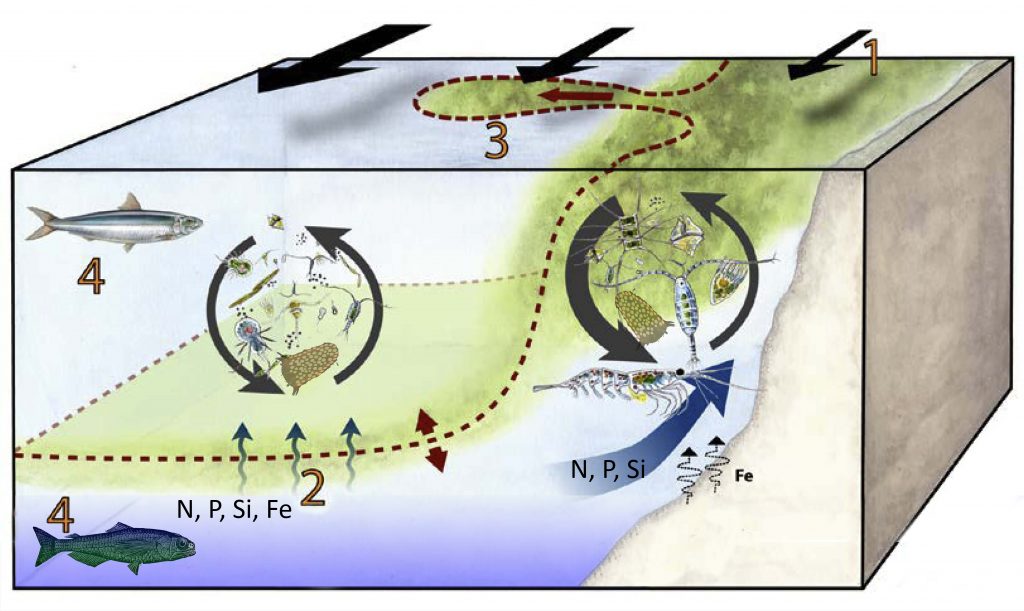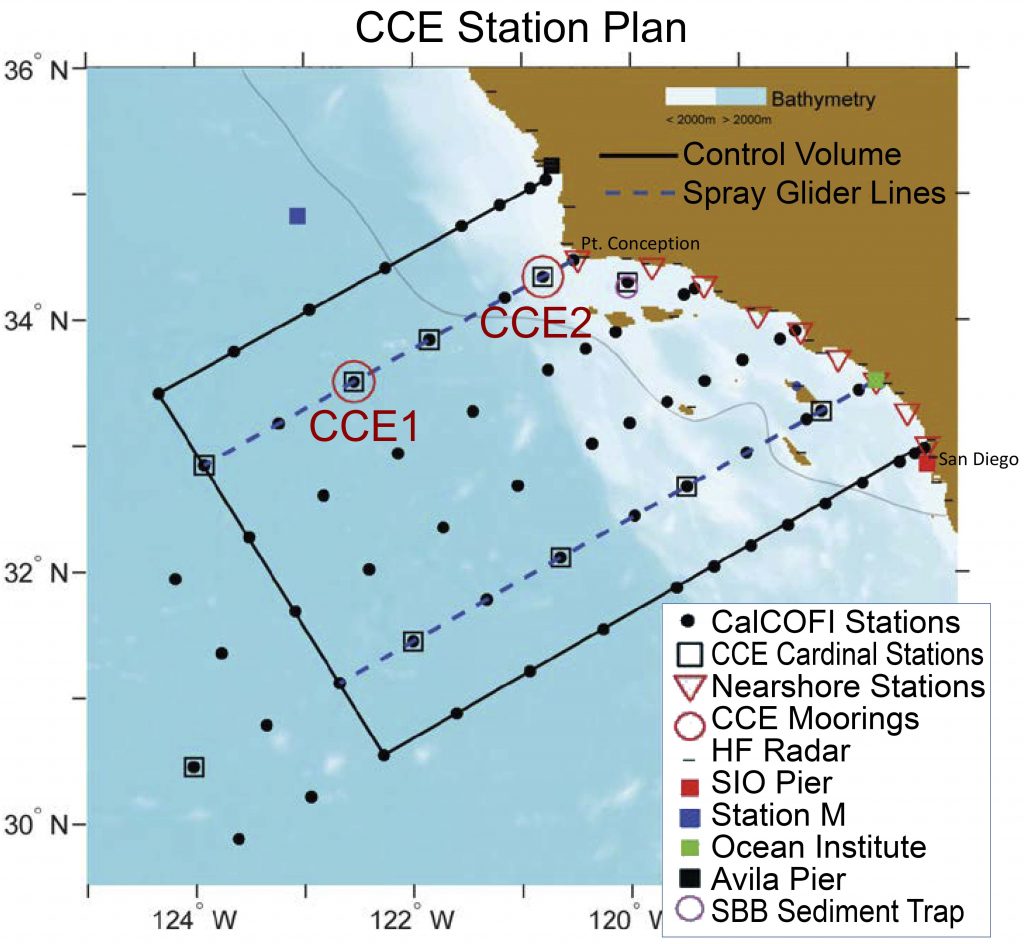The California Current System is a coastal upwelling biome, as found along the eastern margins of all major ocean basins. These are among the most productive ecosystems in the world ocean. The California Current Ecosystem LTER (32.9°, -120.3°) is investigating nonlinear transitions in the California Current coastal pelagic ecosystem and their roles in altering the structure and dynamics of the ecosystem. These changes are driven by multiple phenomena, including long-term forcing by a secular warming trend, the Pacific Decadal Oscillation, El Niño, and large extratropical marine heatwaves. The California Current sustains active fisheries for a variety of finfish and marine invertebrates, modulates weather patterns and the hydrologic cycle of much of the western United States, and plays a vital role in the economy of myriad coastal communities.
The California Current Ecosystem (CCE) Long Term Ecological Research (LTER) site is an interdisciplinary group of scientists, students, and educators that is working to understand and communicate the effects of long term climate variability on the California Current pelagic ecosystem. The CCE site became part of the U.S. National Science Foundation-supported Long- Term Ecological Research network in 2004. The CCE LTER program focuses on interdisciplinary oceanographic research and features extensive collaborations amongst physical oceanographers, biogeochemists, and marine ecologists and utilizes diverse observational platforms, process studies, and modeling approaches to investigate ecosystem change.

CCE is based at the Scripps Institution of Oceanography/University of California, San Diego, but currently includes partners at several other institutions (Florida State University, Rice University, Brown University, Farallon Institute, and the Southwest Fisheries Science Center/National Marine Fisheries Service, among others). The CCE site welcomes scientific collaborations with visitors and researchers located elsewhere.
The CCE-LTER site is located off the southern coast of California, extending from San Diego north to San Luis Obispo and westward over 500 km. This area comprises an ecosystem that includes the California Current, which is the eastern current of the North Pacific Gyre. This gyre is a system of currents that circulate water around the north Pacific Ocean. In much of the California Current, winds acting on the sea surface transport nutrient-rich, deep water upward, where it becomes available to organisms that live near the ocean’s surface. This process is called coastal upwelling, and sustains a highly productive ecosystem.
The CCE region has been studied intensively for over 75 years by a group called the California Cooperative Oceanic Fisheries Investigations (CalCOFI). Because there is a long record of observations and a rich data set from this region, scientists have noted changes in the CCE that happen over a variety of time scales. These changes include a long term ocean warming trend that has been documented over the past 6 decades, the Pacific Decadal Oscillation, and El Niños. The Pacific Decadal Oscillation is a series of warming and cooling periods that occur in 20-30-year cycles. El Niño is an episodic change in the ocean-atmosphere system of the equatorial Pacific that occurs approximately every two to seven years. El Niño is characterized by increased ocean temperatures and decreased upwelling in the equatorial Pacific Ocean, yet has influences that extend to the California Current system and elsewhere around the world. More recently, marine heatwaves of varying intensity and duration have affected our region on an almost annual basis. Many of the studies conducted as part of the CCE-LTER focus on changes in the ocean ecosystem that occur over these different time scales.
